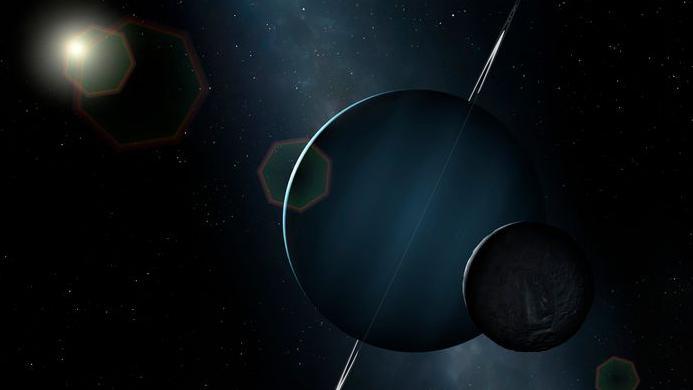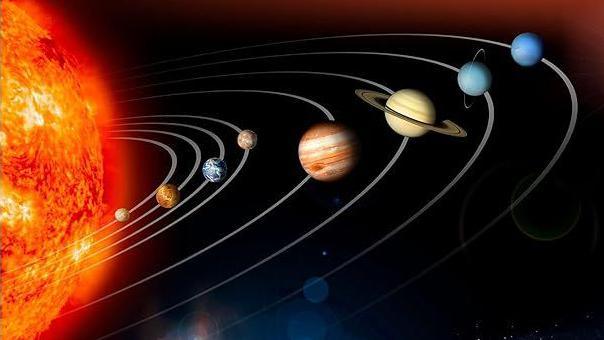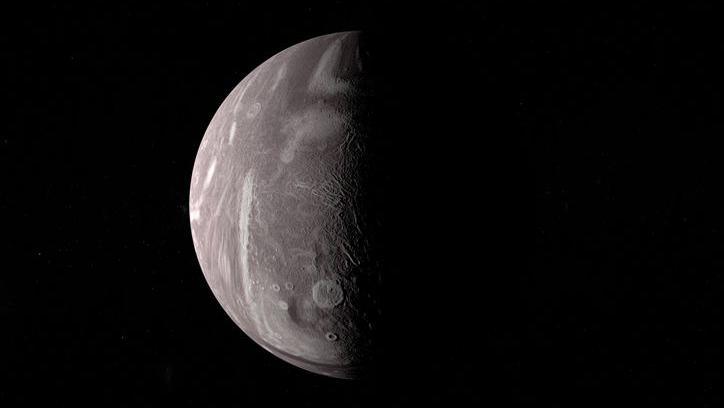Planet's moon may have an ocean under its surface

- Published
Scientists have long been trying to find signs of life on other planets, and a new discovery could bring them one step closer to achieving that aim.
A new study suggests that one of Uranus’ moons - called Miranda - might be hiding an ocean of water beneath its surface.
Miranda is the smallest and innermost of Uranus's five round moons and orbits the planet around once every 1.4 Earth days, according to Nasa.
If true, it would make the distant moon one of only a few places in our solar system which experts think could potentially support life.
More like this
How an ancient meteorite that struck Earth caused life to bloom
- Published22 October 2024
Primary school pupils speak to astronaut living on the ISS
- Published24 October 2024
Nasa telescope spots 'volcanic' star
- Published24 October 2024
What did scientists discover?

Uranus is the seventh planet from the Sun, and it has the third largest diameter
The discovery was made by a group of scientists in America, from the University of North Dakota and the Johns Hopkins Applied Physics Laboratory.
They decided to take a closer look at Miranda, which is known to have a bumpy and cratered surface, thanks to images captured by Nasa's Voyager 2 space probe.
Many scientists believe that these bumps could be a result of tidal forces and heating within the moon.
The team developed a computer model to test several possible structures of the moon’s interior, matching the predicted results to the actual geology of the surface of the moon.
Their experiment suggested that Miranda had a huge ocean beneath its icy surface around 100 to 500 million years ago.
As Miranda is a small satellite - researchers think the ocean would have filled up almost half of the moon’s body.

Tom Nordheim, from the Johns Hopkins Applied Physics Laboratory, who worked on the project said: “To find evidence of an ocean inside a small object like Miranda is incredibly surprising.”
“It helps build on the story that some of these moons at Uranus may be really interesting - that there may be several ocean worlds around one of the most distant planets in our solar system, which is both exciting and bizarre,” he added.
However, in order to confirm whether Miranda does contain water, experts say that more investigation work needs to be done.
Caleb Strom, from the University of North Dakota, explained: “We won’t know for sure that it even has an ocean until we go back and collect more data.
"For now, we’re excited by the possibilities and eager to return to study Uranus and its potential ocean moons in depth.”
